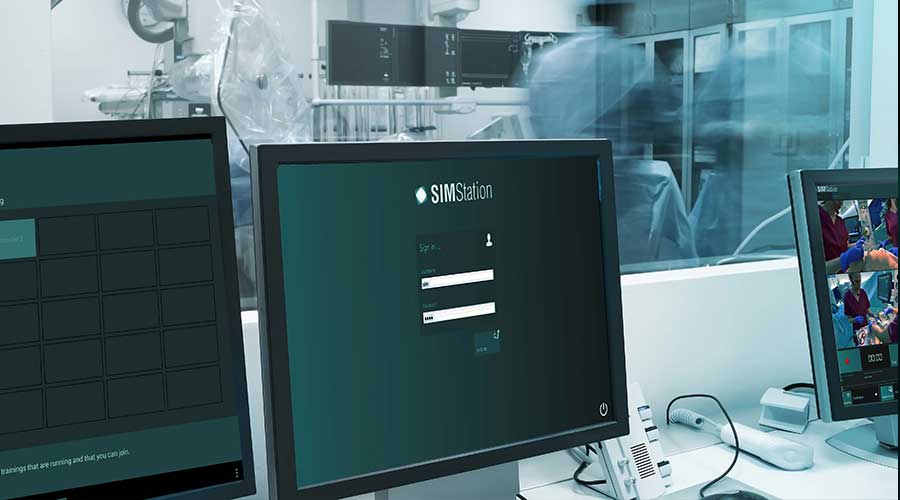
Lessening Distractions in the Control Room Creates Better Simulations
WHY LIGHTENING THE COGNITIVE LOAD OF THE EDUCATOR IS A WIN FOR EVERYONE
Let’s face it, simulation control rooms could use a huge makeover; so many distractions can overwhelm most simulationists. Cognitive load refers to the total amount of mental effort being used to accomplish a set of tasks, or just one task. The human brain can only do so much before errors become a part of the effort.
So, when a typical OB simulation room has both the mother and newborn simulators, a fetal heart monitor and the mother’s vitals, it requires a means for the simulation operator/facilitator to control the progress and outcome of the scenario; this requires a lot of infrastructure at the simulation control station. In the case of an OB scenario, one person (sometimes two) is required to operate a computer to control the OB simulator, another computer to control the newborn simulator, and a third computer to manage the audiovisual solution that allows the operator to see into the room from multiple angles. On top of this, some configurations may have at least one other computer that is displaying vitals in the patient room, which to some degree must be managed as well.
IT'S A TWO MAN JOB
For the operator to guide the scenario, they need to be able to see and hear what learners are doing so that appropriate responses can be managed. Pan-Tilt-Zoom (PTZ) cameras may need to target another view of the room, getting another glimpse into the minds of the learners. “How many liters of oxygen did they administer to the patient?” Zoom the camera in to see what the gauge says, but oops, while the operator was doing that, the learners were doing something else in the space, but the operator missed it. With so many computers, the operator may have to switch between several keyboards and pointing devices (mouse or touch pad). Each computer may have a different operating system, so the operator is having to migrate their attention away from assessing learners constantly, as they navigate between multiple platforms. The operator can also be the voice of the patient, or directing someone else to be the voice of the patient. A male operator uses falsetto to approximate a female patient’s higher voice. The learners giggle as they are not convinced. The learners ask the “patient” several questions, and the operator shuffles through some notes to find the correct response. I’ve been there. It is overwhelming and at the end of the scenario, I am emotionally and physically spent. Therefore, some simulation programs utilize a subject matter expert (facilitator/educator) to help assess the learners and guide the operator, and in some cases, portray the voice of the patient. Even with two people, there is a lot to coordinate, communicate and monitor.
NO TIME FOR ERRORS
For those of you reading this that have facilitated a scenario using simulators, you know what it means to experience cognitive overload. Operating the scenario is only part of the cognitive load that a typical operations specialist must facilitate. Once the scenario is complete, the simulation space must be setup for the next group of learners. The simulator must be reset, and perhaps calibrated appropriately. What if a simulator has a technical issue? What if the network goes down? What if? Each interval between each scenario are as critical as the scenario itself. Are the props in place? Are supplies present and in the right quantity? This can be a logistical nightmare, as the setting must be complete and ready by the time the learners step into the scenario environment.
ANY SOLUTIONS?
Keep in mind that a faculty member or a simulation educator may not have the “luxury” of having a simulation technician, or operations specialist, so must function as such. This only adds another layer of distraction (cognitive load) as these professionals must think beyond the moment and consider how a scenario might fit into the overall curriculum, and how learner performance should be addressed in a safe environment during debriefing. Join us in the next article 6 ways to Lessen Distractions in the Control Room as we begin to address technological and operational solutions to cognitive overload. Have questions? Reach out to us here or chat with us below!

